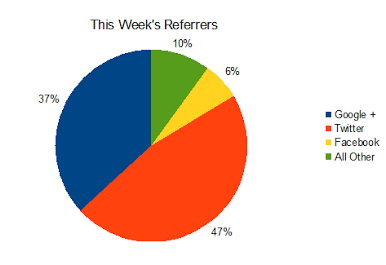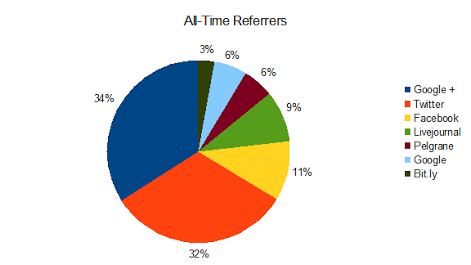Robin D. Laws's Blog, page 88
January 25, 2012
The Design Throughline, and How To Implement It
 Or, How To Design RPGs the Robin Laws Way (Part Three of Several; see part one for introduction and disclaimer)
Or, How To Design RPGs the Robin Laws Way (Part Three of Several; see part one for introduction and disclaimer)
After a longer-than-planned hiatus, let's jump back in. Last time I discussed the design throughline, the central concept underlying game play, as one of two fundamental elements I want to determine as the very first step of creating an RPG.
During the design process, the design throughline becomes a benchmark against which I test new rules. It's easy to get sidetracked when designing a subsystem and lose track of the entire rules set's ultimate purpose. To do this it often becomes necessary to articulate additional principles that flow from the design throughline. GUMSHOE's design throughline concerns the facilitation of investigative play. For this reason it seeks to emulate mystery-based fictional sources rather than simulate reality using a physics engine. It aims to be simple, to allow players to focus their brainpower on the overarching meaning of the clues they assemble. In turn, for both of those reasons, it strives to make its rules player-facing. For example, rather than have adversaries roll to see if they detect you when you're hiding, players roll to beat a Difficulty, expressed in the adversary's stats, to see if they've successfully hidden.
D&D doesn't do that, which makes sense, because Dungeons and Dragons is a game about killing monsters and taking their stuff. Having the stats for monsters operate independently of, while interlocking with, the stats for the characters, fits that game's implicit design throughline.
Sometimes I find myself falling back on the core assumptions of previous games. They're familiar and understandable to current players. Compromises with the design throughline may sometimes be justified for this reason: people can absorb only so much new stuff in one go.
As I revise a rules set—either during original design or over time in follow-up products—I often find myself altering material to bring it line with the throughline. Sometimes it takes a while for the implications of the throughline to become clear. We've implemented the player-facing principle more consistently over GUMSHOE's various iterations, as it has become clearer to us.
When a rule causes trouble, or starts feeling wrong, I ask myself if it has taken on a logic of its own at odds with the design throughline. The first iteration of GUMSHOE space combat got away from me because I fell into a level of detail that, while not exactly simulative, set aside the simplicity and abstraction found in the rest of the system. The new version succeeds by back to the design throughline and its implications and restoring those qualities.
January 24, 2012
The Birds: Shirk
January 23, 2012
DoubleGoogle+Good
 Last summer, Internet-shaking events of cataclysmic import took place within weeks of one another. One, Google launched its social networking site, Google+. Two, in a long overdue move prompted by repeated denial of service attacks at LiveJournal, I switched this blog's main venue to Blogger.
Last summer, Internet-shaking events of cataclysmic import took place within weeks of one another. One, Google launched its social networking site, Google+. Two, in a long overdue move prompted by repeated denial of service attacks at LiveJournal, I switched this blog's main venue to Blogger.
Had I anticipated the benefit of Blogger's better analytics, I might have switched way earlier. Given the timing, those beautifully formatted traffic stats have mapped the incredible progress of links placed on Google+ as a driver of traffic to the site.
Social media links now bring the vast majority of readers to this site. The days of following a blog, either by RSS feed or repeated visits to an aggregator like the LJ friends page, are gone, at least for this virtual clubhouse.
At first, the three sites drove traffic to the site in roughly equal measures. This itself is amazing when you consider the brand-newness of G+ at the time. Since then Facebook's share of that pie has shriveled to nearly nothing. Last week's referring sites tally (as of Tuesday evening) ranks Twitter at 47%, G+ at 37%, and Facebook at a mere 6%.

Twitter's share goes up when a post gets a lot of play, as The D&DNext post did last week. Retweets evidently carry more weight than shares on Google.
By contrast, here's the pie for the Blogger site to date:

Here Twitter and G+ are nearly equal, with the newer platform actually squeaking out ahead of its blue-feathered elder. Facebook's slice is bigger than in the weekly chart, reflecting its greater pull during the site's first months. LiveJournal links are from the old site to the new; these have tapered off as readers have adjusted to the shift. The Google slice represents search results. I'm not sure whether the Bit.ly links are strays from my own social network links or were created by others.
What I conclude from this is that Facebook has fallen away as a mechanism for people like me to communicate with a broader audience. This is unsurprising; Twitter and G+ were designed for this purpose, where Facebook's focus has always been on assembling, decompartmentalizing, and cross-pollinating your personal contacts. The surprise is how quickly the change effected itself.
What you might conclude from this is that if you are also trying to maintain contact with an audience and are not on Google+, you probably ought to be. I might enjoy some first mover advantage for having dived in right away, but it's still early days for the new platform and there still appears to be mindshare to spare.
January 20, 2012
Who Killed SOPA?
 SOPA died last night.
SOPA died last night.
If you're a member of the MPAA team tasked with shepherding this bill into Congress and getting it passed into law, you started the week hoping the bill would move quietly through the system as an uncontroversial piece of commercial regulation.*
Uncontroversial bills have to be bipartisan. So you appointed as your legislative spearhead a Texas Republican, and worked to get congressmen and senators from both sides of the aisle to support the bill.
Depending on which conservative interest he favors, a Republican lawmaker might align for or against balls-to-the-wall intellectual property enforcement. It advantages** a lucrative industry, one in which America enjoys a worldwide upper hand. On the other hand, that industry is Hollywood, whose content social conservatives love to hate.
Unfortunately for you, MPAA lobbyist, there's a primary on. The primary system may be a crazy way to pick a president, but it's a fabulous way to figure out which stances work with voters. And last night all four primary contenders intuited that slamming Hollywood played better for them than supporting its industrial interests. In one brief round of answers they cemented the anti-SOPA position as the Republican default.
This doesn't mean that Democrats will line up in favor of SOPA. They too can pick either side of the fight and remain within their interests or ideology.
But even if you keep the Democrats on board, you second-person MPAA representative, you, the issue won't go back to being bipartisan again. Worst case, you lose both parties. Best case, you get a partisan battle, which will be protracted, heavily publicized, and, with the system's profusion of veto points, is unlikely to resolve in your favor.
The Internet generation may have whittled down SOPA's hit points with blackout day, but it was the Romney-Gingrich-Santorum-Paul adventuring party that scores the kill-steal.
*To nurture this hope, you would have to forget that the sector you want to regulate, information tech, is as big if not bigger than the entertainment industry, and better positioned to mobilize public opinion. But let's leave that aside for the moment.
**If it works as claimed. But let's leave that aside for the moment.
January 19, 2012
Uncrossing the D&D Setting Streams
 Reverance Pavane, regarding my earlier D&DNext wish list:
Reverance Pavane, regarding my earlier D&DNext wish list:
Forgot to ask about what you are looking for in an official setting...
I don't so much have a single clear preference as an awareness of the difficulty the D&DNext team faces in harmonizing the streams on this one. You want DMs to create their own worlds from the set of assumptions the rules build into any D&D game—there are wizards and gods and orcs and demons and this particular spell list and so on. At the same time, a canon of lore has accumulated around D&D, so that its audience expects certain characters, places and situations as part of their experience. Obvious examples: Sigil, the drow and their Underdark cities, and the roster of demon lords that slightly shifts with each new take on the setting. To many fans, these are as much a part of the D&D feel as magic swords or the fireball spell.

3E's original vision had a vaguely defined Greyhawk (which each DM would make up as he went along) as the default world, with the classic settings depicted in walled-off supplements. 4E split the difference a bit, leaving the material world undefined but concretely populating the otherworldly spaces.
A unity edition suggests a breadth of approach, giving fans of the classic settings the tools to play around in them, and kitbashers the leeway to disentangle the intellectual property elements from the rules. Perhaps the team will find a way to treat past continuities in parallel, so you can adventure across the Forgotten Realms in original, reboot, or rereboot modes. A take on setting that is, if you will, officially unofficial.
So, where setting is concerned, my hoped-for keywords would be familiarity for current fans, accessibility for new ones, and flexibility for all.
January 18, 2012
The Birds: Remember
January 17, 2012
Community, Comedy & DramaSystem
 Benjamin Hayward asks:
Benjamin Hayward asks:
After watching the first season of Community sequentially, I was struck by how much it's characters resemble Dramatic Heroes much more than Iconic ones in their decisions despite the show being advertised as a sitcom. Reading the DVD box reveals all. The show is supposedly about how attending college changes the characters through the lessons they learn. In this way, the characters all slowly change throughout the season, with some doing so more than others in each episode. Have you watched enough of Community to comment on how Drama System might fit it? Or perhaps how Drama System might fit serial comedy in general?
I haven't subjected comedy to the same analysis that I have drama and the procedural, so consider these thoughts provisional. Blame Aristotle for losing the treatise on comedy that originally accompanied The Poetics. If only he'd backed up to a USB drive!
Comedies tend, like procedurals, to threaten the characters' status quo and then return to it. The leads aren't solving external problems as the iconic heroes of procedural stories do. Iconic heroes encounter disorder and tame it. Comedy protagonists tend to instigate disorder (often by pursuing an internal flaw, just like tragic heroes), which continues to spiral out of control in response to their efforts to control it. Finally the disorder reaches a culmination. The hero, undone, confronts his flaw and all is forgiven and order restored.
The equivalent of the procedural would be the slapstick or physical obstacle: the accelerating conveyor belt, the clock hand from which the hero dangles, the damnable road runner who won't be caught. Moments of character comedy play out just as dramas do—there's a petitioner who wants something, a granter who does or doesn't give it to them. Because of these similarities you could play a sitcom format with DramaSystem—though I'm not sure who really wants to. It's easier to be funny by riffing on a putatively serious game than to keep the jokes flying on purpose.
Community creator Dan Harmon sets out to subvert sitcom conventions and as such bends his characters much further out of their original molds than the audience's comfort level might permit. This becomes all the more apparent after Season One. Still, you could argue that whatever changes the characters go through, or surprising qualities they reveal about themselves, the study group itself—the real community the show's title refers to—is restored to harmony at the end of each episode.
January 16, 2012
D&DNext Wish List
 The announcement for the upcoming new version of Dungeons & Dragons positions it as an Ecumenical Council for tabletop roleplaying's flagship title. Reuniting the disparate partisans of the dread Edition Wars under a single new banner is a tough brief. The Mearls-Cook-Cordell-Schwalb team comprises a formidable brain trust--one well-wired into the sometimes paradoxical demands of the gamer tribe. So I'm very curious to see what they draw from each past version as they assemble this Uber-edition. Given my past freelancing for the line, the possibility exists that I might get to see what they're up to—and thus be unable to talk about it. So, before that happens, here's my list, untainted by actual information, of what I'd hope to see swept into the new iteration.
The announcement for the upcoming new version of Dungeons & Dragons positions it as an Ecumenical Council for tabletop roleplaying's flagship title. Reuniting the disparate partisans of the dread Edition Wars under a single new banner is a tough brief. The Mearls-Cook-Cordell-Schwalb team comprises a formidable brain trust--one well-wired into the sometimes paradoxical demands of the gamer tribe. So I'm very curious to see what they draw from each past version as they assemble this Uber-edition. Given my past freelancing for the line, the possibility exists that I might get to see what they're up to—and thus be unable to talk about it. So, before that happens, here's my list, untainted by actual information, of what I'd hope to see swept into the new iteration.
Of course the vastness of the challenge is that everybody will have a different list.
4E
Concise, manageable, easy-to-design creature stat blocks
On-line tools add ease of play
Alignment simplified and detached from mechanics
3E
Open license as focus of community excitement
2nd Edition
Emphasis on setting (though this is a double-edged sword, as splitting the line into multiple settings started the great D&D diaspora)
Advanced Dungeons & Dragons
baseline tropes of the D&D feel (whatever that is, leaving out the dysfunctional ones)
prose style brimming with idiosyncratic personality
serves as introduction to the fantasy canon
Blue Box Introductory Set
fast combat
feeling of being a kid again
Comments that ignore the above conceit to simply stake out a prior position in the Edition Wars are permissible, but will be silently judged.
January 13, 2012
Headlines as Story Beats
 Hamlet's Hit Points identifies three basic story beats relating to the presentation of information. The pipe beat hides info for later, and as such is strictly a creature of fiction. The other two beats, the question and the reveal, are central to any narrative communication that seeks to attract and hold audience interest. Questions cause emotional friction or longing; reveals relieve these feelings. The first is a down beat, the second an up beat.
Hamlet's Hit Points identifies three basic story beats relating to the presentation of information. The pipe beat hides info for later, and as such is strictly a creature of fiction. The other two beats, the question and the reveal, are central to any narrative communication that seeks to attract and hold audience interest. Questions cause emotional friction or longing; reveals relieve these feelings. The first is a down beat, the second an up beat.
New stories can be broken down with beat analysis, too. The shoehorning of information into a storyline with emotional ups and downs becomes most apparent on television news. However, it's present in print reporting as well.
However arranged, a newspaper or magazine headline poses a question. As much as it may seem to lay out the basics of a story, it's really working to excite your imagination and formulate questions about its further details. The body of the story then proposes to answer that question, along with the core journalistic five Ws: what? Who? Where? When? Why? (And the red-headed stepchild, How?)
If you're using social media to spread awareness, you can garner more clicks by hooking into the beat structure of headline and story. When you write a blurb on Twitter, Facebook, G+ or whatever to a post you want people to read, compose it so that it poses a question, in the reader's mind if not directly. Reference to one of the 5Ws never hurts.
The hidden dynamic of the headline, and how to harness it.
Why ghouls are the next vampires.
Who are the players of the future?
When to eject dysfunctional gamers.
Of the 5Ws, the most clickable is the H. People want to know how to do things.
Other classic headline tricks attract clicks. Citing a number poses an implicit question. If your headline reads "Ten Mistakes GMs Make", I'm immediately wondering which items you've chosen.






